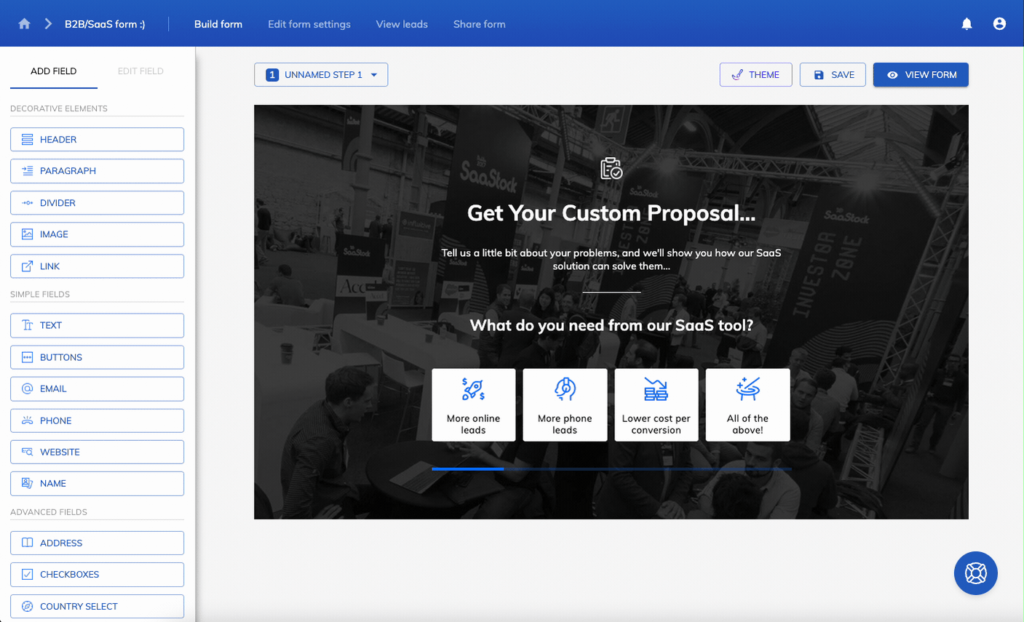Predictive Lead Scoring
« Back to Glossary IndexQuick Summary
Predictive lead scoring uses machine learning and data analytics to evaluate and rank leads based on how likely they are to convert. It’s a game-changer for businesses, helping them focus on high-value prospects and boosting efficiency and sales results. In this article, we’ll walk you through how predictive lead scoring works, why it’s so beneficial, the key models to know, and some tips for getting started. Feel free to check out our blog for more insights.
Struggling to Identify High-Quality Leads?
Not all leads are created equal, and treating them the same can waste time and lead to missed opportunities. Traditional lead scoring methods often rely on manual input and guesswork, which can be hit-or-miss and inefficient. That’s where predictive lead scoring steps in—it uses AI and historical data to analyze patterns, behaviors, and key factors to automatically identify your high-value leads faster and more accurately.
By focusing on data instead of assumptions, predictive lead scoring helps businesses zero in on the prospects most likely to convert, boosting both productivity and ROI. In this Growform guide, we’ll dive into how predictive lead scoring works, why it’s a step up from traditional methods, and how to start using it in your business strategy today.
Why Listen to Us?
At Growform, we make collecting and managing lead data a breeze. With multi-step forms, smart conditional logic, and seamless CRM integrations, we take the hassle out of lead generation. Want better predictive lead scoring? It all starts with high-quality data. Growform ensures your forms capture the most valuable insights, boosting scoring accuracy and empowering your business to make smarter, faster sales decisions.

Clients using Growform have seen higher lead conversion rates and improved pipeline efficiency by integrating predictive lead scoring models with our lead capture solutions.
What Is Predictive Lead Scoring?
Predictive lead scoring is a smarter, data-driven approach to ranking leads based on their likelihood of becoming customers. It moves beyond traditional methods, where sales teams manually assign points to leads based on predefined criteria.
Instead, predictive scoring leverages AI, historical data, and behavior patterns to automatically prioritize leads for you, making the process far more accurate and efficient.
How It Works:
- Data Collection: The system gathers a wide range of information about your leads, including demographics, company details, online behaviors, and engagement activities, such as email opens, website visits, and content downloads. This comprehensive data creates a complete picture of each lead.
- AI & Machine Learning: The technology then analyzes historical data, identifying trends and patterns from past conversions. By learning what factors contributed to successful deals in the past, it can predict which leads are most likely to convert in the future.
- Scoring & Prioritization: Each lead is assigned a score, ranking them based on their probability of becoming a customer. High-scoring leads are flagged as top priorities, ensuring your sales team can focus their time and energy on the most promising opportunities.
By automating this process, predictive lead scoring eliminates the guesswork and subjective bias of manual scoring. It helps your sales and marketing teams work smarter, not harder, directing their efforts where they’ll have the greatest impact. This means higher conversion rates, more efficient workflows, and ultimately, better results for your business.
Predictive Lead Scoring vs. Traditional Lead Scoring
Both predictive and traditional lead scoring aim to rank leads, but they differ significantly in approach:
- Data Processing: Traditional lead scoring relies on fixed rules and predefined criteria, which often remain static over time. In contrast, predictive lead scoring continuously evolves, learning and improving from new data as it becomes available. This makes it more adaptable to changing customer behaviors and market trends.
- Scoring Accuracy: Predictive models leverage artificial intelligence and machine learning to analyze complex patterns and provide highly accurate insights. Traditional lead scoring, on the other hand, depends on manually assigned weights and subjective inputs, which can lead to inconsistencies and missed opportunities. With predictive scoring, decision-making is data-driven and far more precise.
- Scalability: Predictive lead scoring automates the entire process, eliminating the need for manual intervention. This makes it particularly valuable for businesses managing a high volume of leads, as it can quickly process large datasets and provide actionable insights without additional effort. Traditional scoring methods often struggle to keep up with growth, requiring significant time and resources to handle increased lead volume.
Benefits of Predictive Lead Scoring
Increased Sales Efficiency
Predictive lead scoring helps you focus on the leads that matter, saving time on unqualified prospects. By automating lead qualification, your sales team spends less time sifting through data and more time closing deals. Prioritizing high-value leads speeds up the sales process, ensuring top opportunities get the attention they deserve.
Improved Conversion Rates
Predictive lead scoring helps you rank leads based on real-time engagement and intent, so your team can act at the perfect moment to boost conversions. You’ll be able to personalize your outreach easily by tailoring messages to customer intent and preferences. Smarter retargeting also reduces drop-offs and keeps potential customers engaged throughout.
Better Marketing & Sales Alignment
When sales and marketing share data, collaboration becomes easier. Predictive lead scoring helps marketing focus on high-value leads, reducing wasted ad spend on low-intent prospects. Aligning your KPIs ensures both sales and marketing teams track meaningful metrics, creating a more unified approach to managing leads.
How to Implement Predictive Lead Scoring
1. Collect & Organize Lead Data
A strong predictive lead scoring model starts with high-quality data. You need to capture relevant information about your leads, including demographics, behavior, and engagement levels. Using smart forms to track user activity and responses helps ensure accurate data collection. Integrating with CRM and analytics platforms ensures that this data flows seamlessly, eliminating gaps in lead tracking. If you’re missing key details—such as company size or job title—data enrichment tools can fill in the blanks.

For example, Growform’s multi-step forms help businesses collect in-depth lead insights, improving scoring accuracy from the start.
2. Choose a Predictive Scoring Model
Not all predictive scoring models are the same, so picking the right one really comes down to your business goals and the data you have available.
Logistic regression models look at past conversions and assign weights to different factors, making them a great choice for structured lead qualification. If you’re after a more flexible option, random forest models use multiple decision trees to boost accuracy and handle complex interactions between variables.
For businesses ready to level up, AI and deep learning models take things further by learning from real-time data, improving predictions, and zeroing in on high-value leads with ease.
3. Train & Optimize the Model
Once your model is up and running, it needs regular fine-tuning to stay on point. Start by looking at historical data to see how well the model’s predictions match up with actual conversions.
Tweak the weighting factors to keep up with changing sales trends and customer behaviors, making sure your highest-scoring leads are truly the most valuable.
Markets change over time, so it’s a good idea to keep an eye on your model and retrain it regularly to keep it accurate and effective.
4. Automate & Integrate Lead Scoring
Predictive lead scoring works best when it’s smoothly integrated into your sales and marketing systems. By automating lead routing, you can make sure high-scoring leads get prioritized and reach your sales team first for quicker follow-ups.
Syncing with your CRM keeps lead scores updated in real-time as new data comes in, so everything stays fresh and accurate. You can even kick off marketing automation workflows to send personalized emails, offers, or content to warm up leads based on how likely they are to convert.
Best Practices for Predictive Lead Scoring
- Keep Your Data Top-Notch: Clean, complete, and well-structured data makes a big difference in improving model accuracy.
- Update & Validate Your Models Regularly: Stay ahead by retraining your models every few months to avoid outdated assumptions.
- Check Scoring Accuracy: Compare your scored leads to actual conversions to fine-tune and improve results.
- Get Sales & Marketing on the Same Page: Make sure both teams understand and use the scoring model effectively for better collaboration.
By following these best practices, you can maximize the impact of predictive lead scoring and drive better results.
Boost Your Lead Scoring Accuracy with Growform
Predictive lead scoring transforms the way businesses qualify and convert leads. By leveraging AI-driven insights, companies can focus on high-value prospects, reduce wasted effort, and increase sales efficiency.
Growform enhances lead capture with multi-step forms, conditional logic, and seamless CRM integrations, ensuring businesses gather the most relevant data for predictive scoring models.
Start improving your lead scoring accuracy? Sign up for Growform today!
Recent Posts
- Your Guide to Using Webflow Form Builder Effectively
- Top 5 Lead Capture Form Examples That Can Boost Your Conversions (2025)
- What Is an Elementor Multi-Step Form & How Does Growform Improve It?
- We Review The Best Microsoft Forms Alternatives for Better Customization and Control
- Here’s Our Review of the Best Form Builders For WordPress Sites
